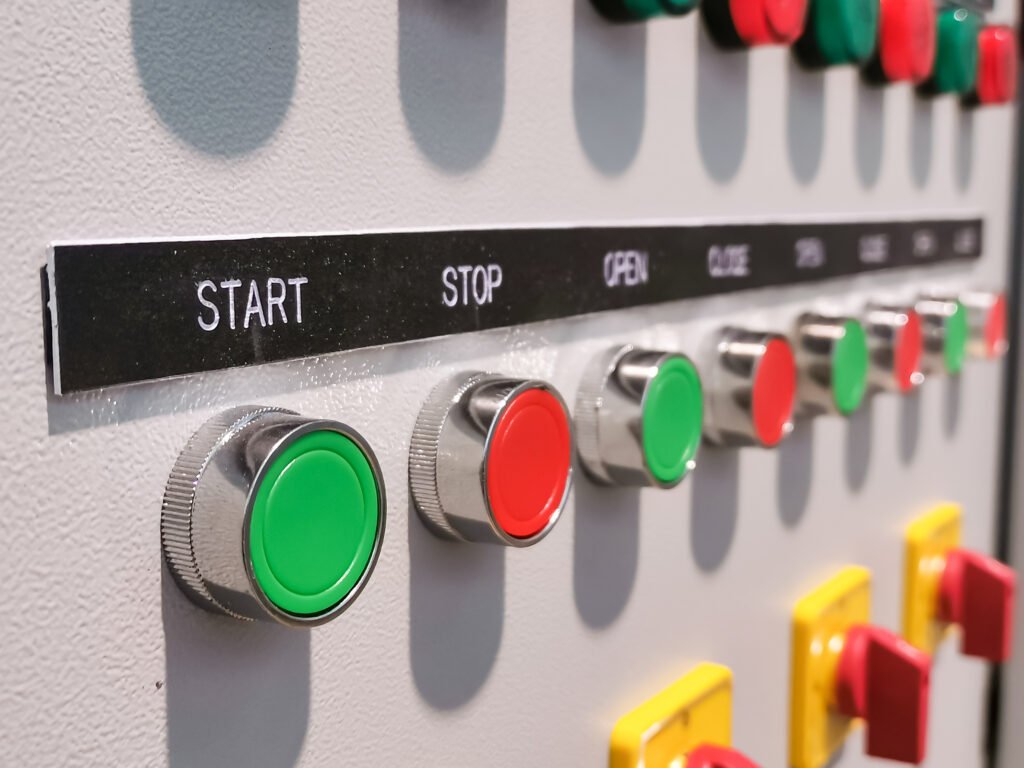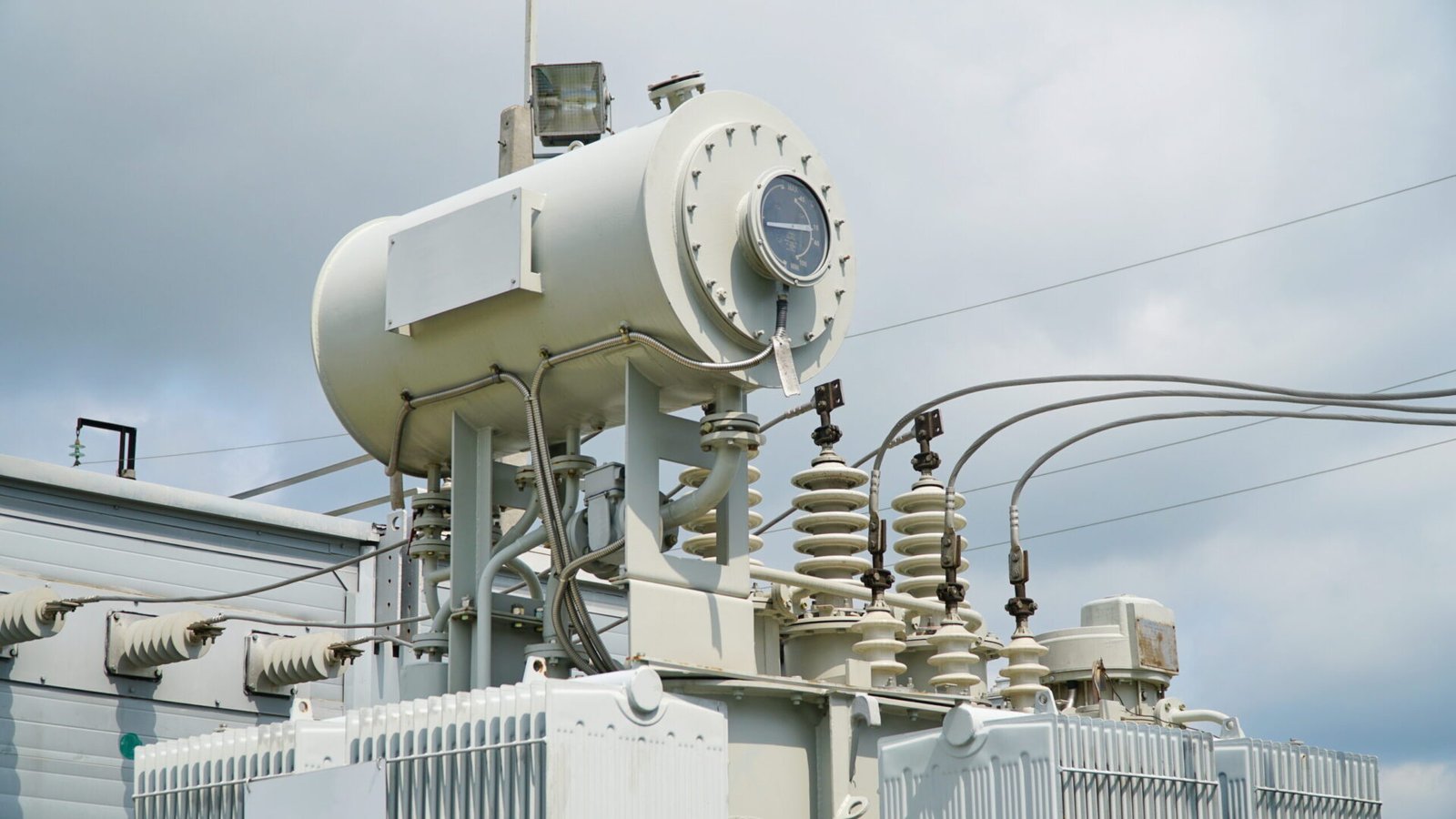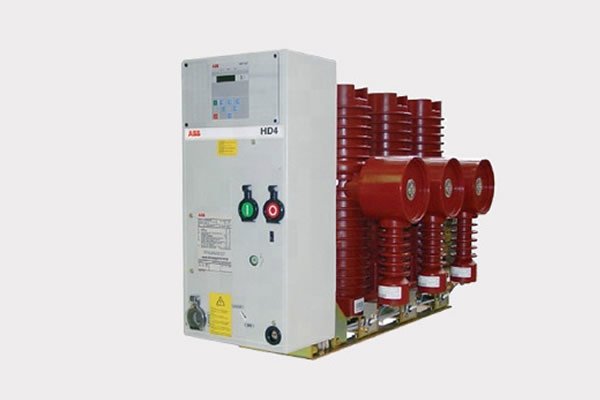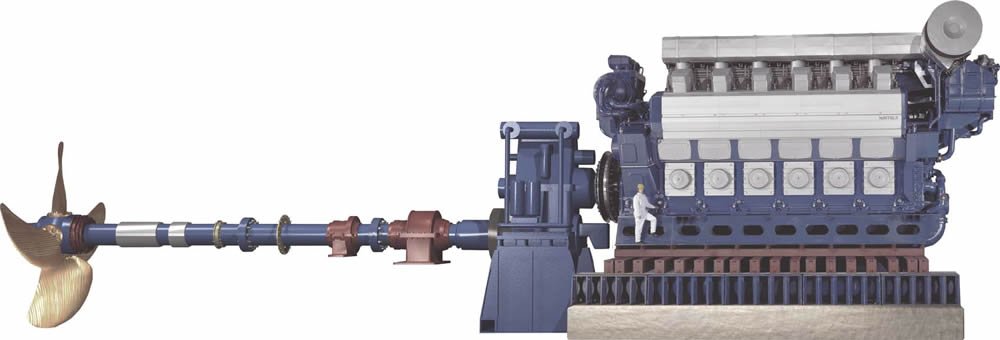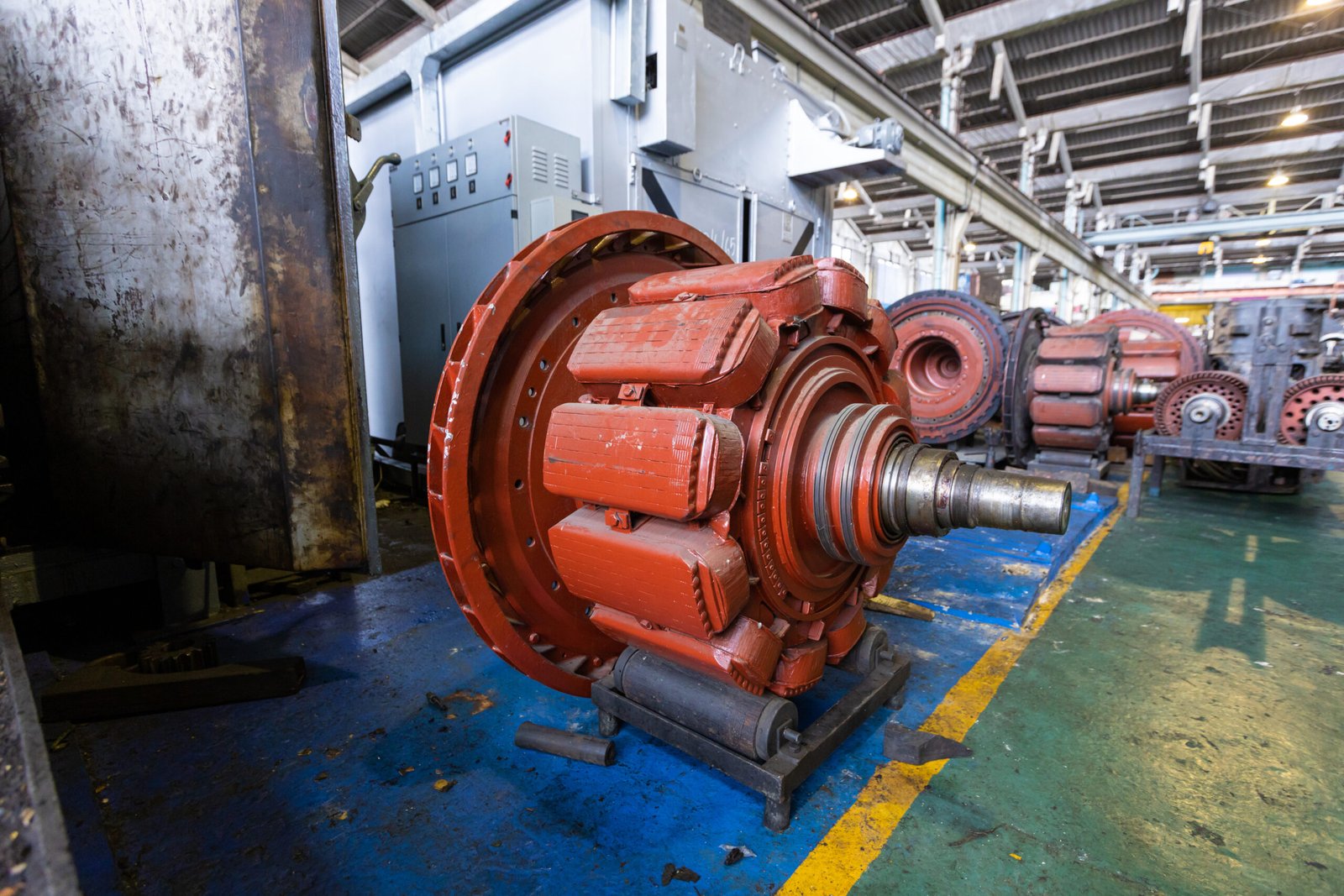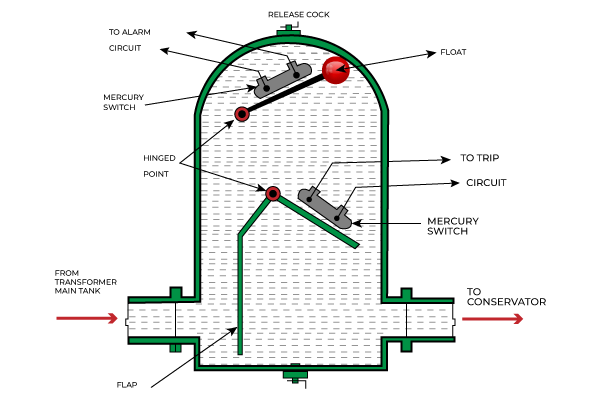Introduction
In today’s rapidly advancing industrial landscape, automation plays a crucial role in enhancing efficiency, precision, and safety. At the heart of many automated systems lies the Programmable Logic Controller (PLC). This powerful device revolutionizes how machines and processes operate across various industries. Understanding what a PLC is and its usage can provide valuable insights into modern automation. In this article, we’ll dive deep into the world of PLCs, exploring their components, functionality, applications, advantages, and future trends.
What is PLC?
Definition
A Programmable Logic Controller (PLC) is a specialized computer used to control machines and processes. Unlike general-purpose computers, PLCs are designed to withstand harsh industrial environments and execute specific control functions in real time. PLCs operate by receiving input signals, processing them based on pre-programmed logic, and sending output signals to control devices like motors, valves, and lights.
History
PLCs were first introduced in the late 1960s to replace complex relay-based control systems in the automotive industry. The invention of the PLC is credited to Richard E. Morley, who developed the first model, known as the Modicon 084, in 1968. Since then, PLCs have evolved significantly, becoming more powerful, versatile, and user-friendly.

Basic Components
A typical PLC system comprises several key components:
- Central Processing Unit (CPU): The brain of the PLC, responsible for executing control programs and processing input/output signals.
- Input/Output Modules: Interface units that connect the PLC to sensors and actuators in the field. Inputs might include switches, sensors, and buttons, while outputs could be motors, lights, and relays.
- Power Supply: Provides the necessary electrical power for the PLC system.
- Programming Device: Used to create, edit, and download programs into the PLC. This can be a dedicated handheld device or a computer running specialized software.
These components work together to ensure the PLC performs its intended control tasks reliably and efficiently.
How Does a PLC Work?
Basic Operation
The operation of a PLC is based on a cyclic process known as the scan cycle, which consists of three main steps:
- Input Scan: The PLC reads the status of all input devices connected to it.
- Program Scan: The PLC executes the user-created program logic based on the input data.
- Output Scan: The PLC updates the status of output devices based on the results of the program scan.
This cycle repeats continuously, allowing the PLC to respond to changes in inputs and control outputs in real time.
Programming
PLCs are programmed using specialized languages that follow international standards like IEC 61131-3. The most common programming languages include:
- Ladder Logic (LD): Resembles electrical relay logic diagrams and is widely used for its simplicity and readability.
- Functional Block Diagram (FBD): Uses graphical blocks to represent functions and their connections.
- Structured Text (ST): A high-level text-based language similar to Pascal, suitable for complex algorithms and data manipulation.
- Instruction List (IL): A low-level language resembling assembly code, suitable for simple and fast operations.
- Sequential Function Charts (SFC): A graphical representation of the sequence of operations, ideal for batch processes and state-based control.
Communication
PLCs use various communication protocols to interact with other devices and systems. Common protocols include:
- Modbus: A widely used protocol for industrial communication, known for its simplicity and reliability.
- Profibus: A standard for fieldbus communication in automation technology.
- Ethernet/IP: A robust network protocol that allows PLCs to communicate over Ethernet networks, providing high-speed data exchange and integration with IT systems.
These communication protocols enable PLCs to connect seamlessly with other control systems, sensors, actuators, and human-machine interfaces (HMIs).
How Does a PLC Work?
PLCs operate through a cyclic process, constantly scanning inputs, executing the control program, and updating outputs. This continuous loop ensures real-time response to changing conditions. Here’s a closer look at how this process works:
- Input Scan: The PLC reads the status of input devices, such as sensors and switches.
- Program Scan: The PLC processes the input data according to the control program, which defines how outputs should respond.
- Output Scan: The PLC updates the status of output devices, such as motors and lights, based on the program’s logic.
This scan cycle happens rapidly, often within milliseconds, allowing for precise and timely control of industrial processes.
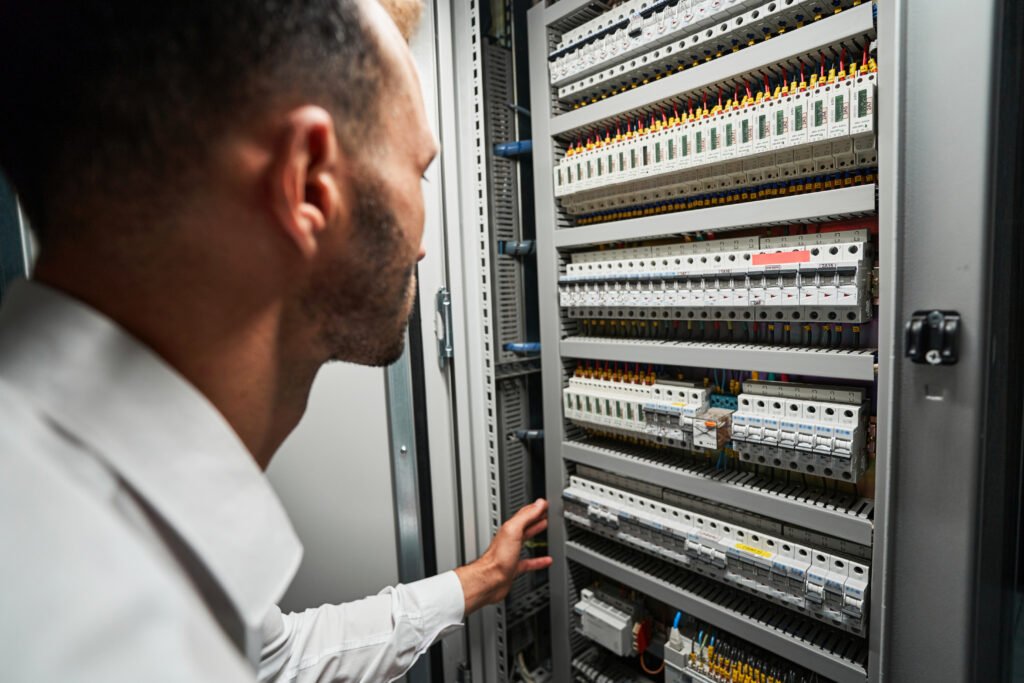
Programming
PLCs are programmed using various languages defined by the IEC 61131-3 standard. These languages include:
- Ladder Logic (LD): Resembles electrical relay diagrams and is popular for its intuitive, visual nature.
- Functional Block Diagram (FBD): Uses blocks to represent functions and their relationships.
- Structured Text (ST): A high-level, text-based language similar to Pascal, used for complex logic.
- Instruction List (IL): A low-level, assembly-like language, offering efficient coding for simple tasks.
- Sequential Function Charts (SFC): A graphical language for representing sequential control and state logic.
These programming languages allow for flexible and complex control logic, tailored to specific application needs.
Communication
PLCs communicate with other devices through various protocols, enabling integration within broader automation systems. Common communication protocols include:
- Modbus: A widely used serial communication protocol.
- Profibus: A fieldbus standard for industrial automation.
- Ethernet/IP: A robust protocol for industrial networking.
- CANopen: Used in embedded systems for automation.
These protocols facilitate data exchange between PLCs, sensors, actuators, and supervisory systems, ensuring coordinated and efficient operation.
Different Types of PLCs
Fixed PLCs
Fixed PLCs have a predefined hardware configuration with a set number of inputs and outputs. These PLCs are cost-effective and suitable for simple applications where the control requirements are well-defined and unlikely to change. Example: Small assembly lines, basic machine control.
Modular PLCs
Modular PLCs offer a flexible architecture where components like CPU, power supply, and I/O modules can be added or removed as needed. This flexibility makes them ideal for complex and scalable applications. Example: Large manufacturing plants, process industries.
Compact PLCs
Compact PLCs integrate the CPU, power supply, and I/O modules into a single unit, providing a space-saving solution. They are designed for applications where space is limited and control requirements are moderate—for example: Building automation, and small machinery.
Safety PLCs
Safety PLCs are designed for applications requiring high reliability and safety. They include features like redundancy, fail-safe operation, and compliance with safety standards—example: Automotive industry, critical process control, and emergency shutdown systems.
What is the Usage of PLCs?
Industrial Automation
PLCs are a cornerstone of industrial automation, controlling machinery and processes in manufacturing, assembly lines, and material handling. They ensure precise and repeatable operations, enhancing productivity and reducing errors. Examples: Automotive assembly lines, and robotic arms.
Building Automation
In building automation, PLCs control HVAC systems, lighting, security, and access control, providing energy-efficient and comfortable environments. Examples: Smart buildings, and commercial facilities.
Transportation
PLCs play a vital role in transportation, managing traffic lights, railway signaling, and vehicle control systems. They enhance safety, efficiency, and reliability. Example: Traffic control systems, and automated railways.
Energy Management
In energy management, PLCs control power generation, distribution, and consumption optimizing efficiency and integrating renewable energy sources. Example: Power plants, smart grids, wind and solar farms.
Water Treatment
PLCs are crucial in water treatment, automating processes like filtration, chemical dosing, and waste management, ensuring clean and safe water supply. Example: Municipal water treatment plants, and wastewater treatment facilities.
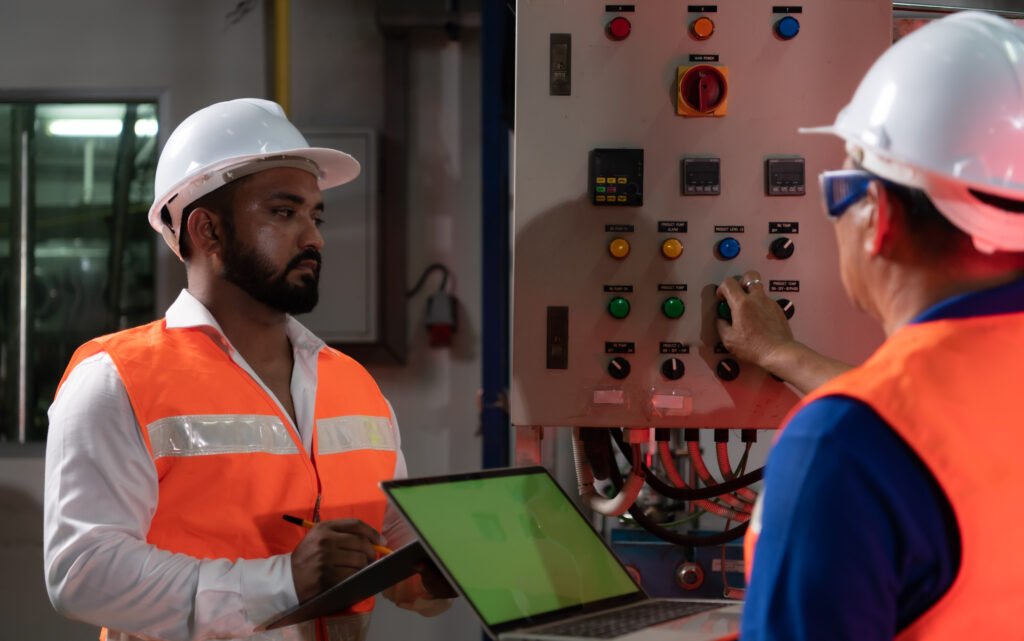
Advantages of Using PLCs
Reliability
PLCs are highly reliable and designed to operate continuously in harsh environments with minimal maintenance. Their rugged construction ensures longevity and dependable performance.
Flexibility
PLCs offer flexibility in programming and configuration, allowing easy adaptation to changing control requirements. Modular designs enable scalable solutions that grow with the application.
Real-time Operation
PLCs process data in real-time, ensuring immediate response to inputs and timely control of outputs. This capability is crucial for applications requiring precise timing and coordination.
Cost-effectiveness
While the initial investment in PLC systems can be significant, they offer long-term cost savings through improved efficiency, reduced downtime, and lower maintenance costs.
Challenges and Limitations of PLCs
Initial Cost
The upfront cost of purchasing and implementing PLC systems can be high, especially for complex applications requiring advanced features and extensive I/O configurations.
Complexity
Programming and maintaining PLCs can be complex, requiring specialized skills and training. This complexity can be a barrier for small businesses or applications with limited technical resources.
Scalability Issues
While modular PLCs offer scalability, there can be limitations in expanding systems beyond certain thresholds. Large-scale applications may face challenges in integrating multiple PLCs and ensuring seamless communication.
Conclusion
Programmable Logic Controllers (PLCs) are indispensable tools in modern automation, driving efficiency, precision, and safety across various industries. By understanding their operation, types, applications, and advantages, you can appreciate the pivotal role PLCs play in enhancing industrial processes and building smarter, more efficient systems. Whether you’re involved in manufacturing, building automation, transportation, energy management, or water treatment, PLCs offer a versatile and reliable solution to meet your automation needs.
For Website Design: Click Here
For Electrical Blogs : Click Here

